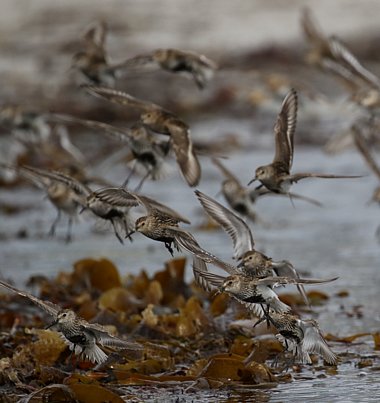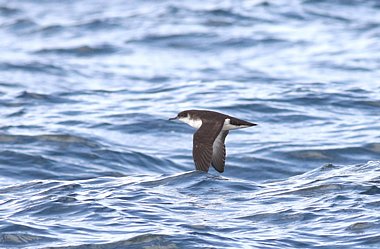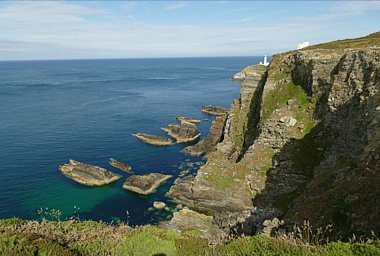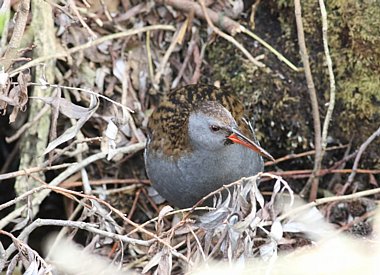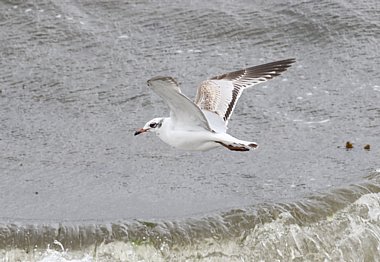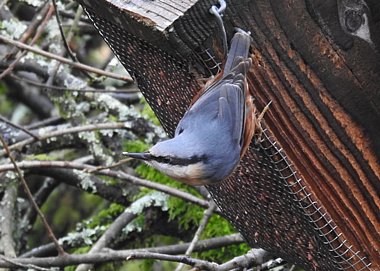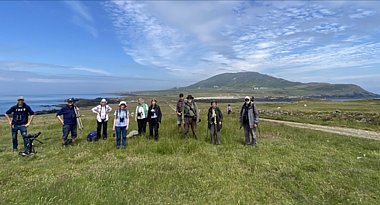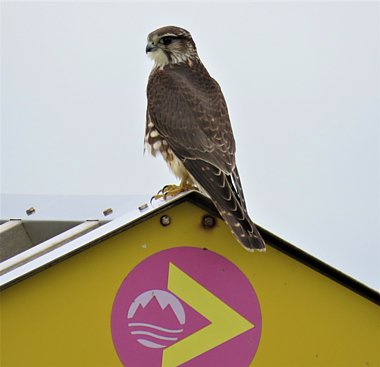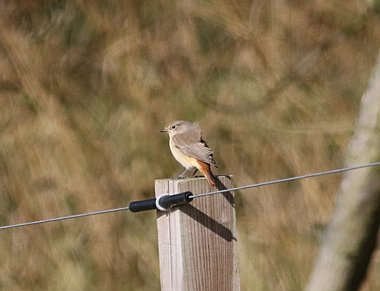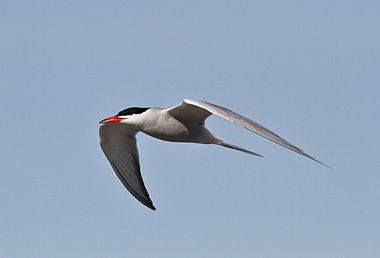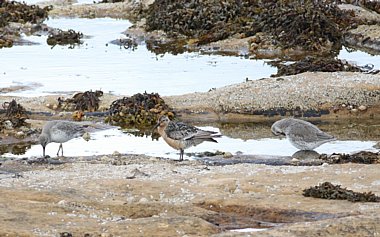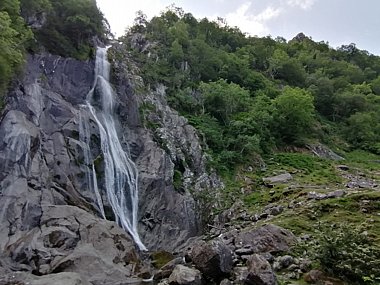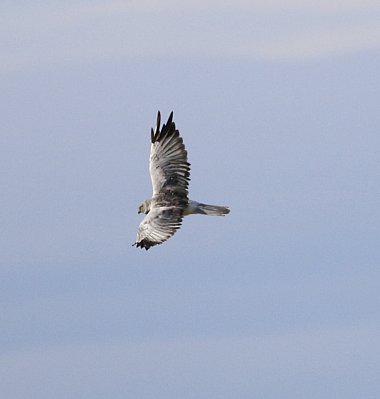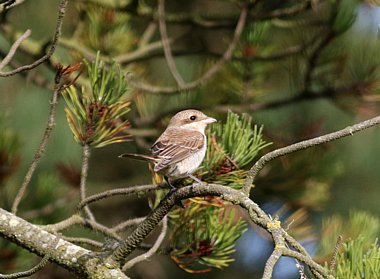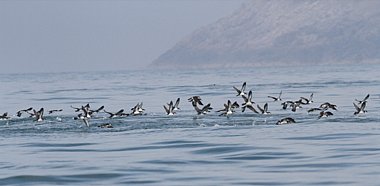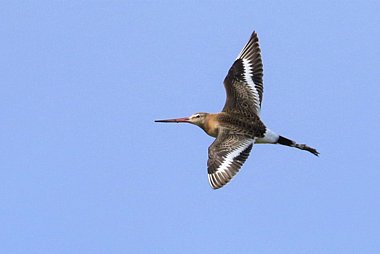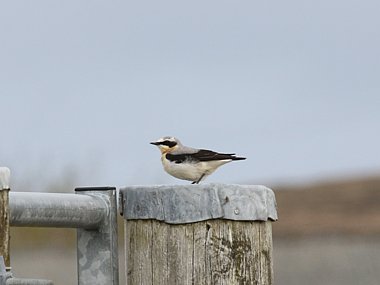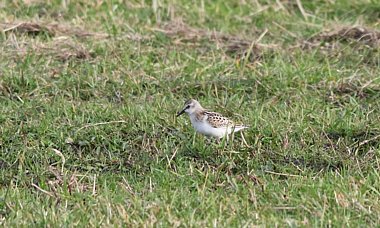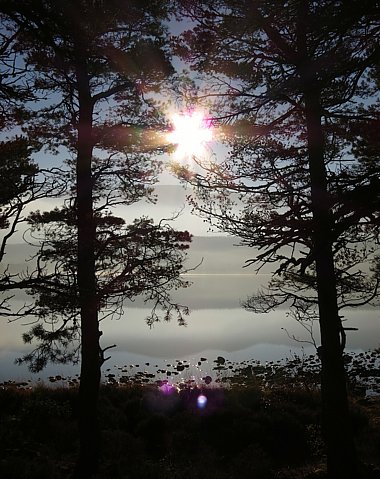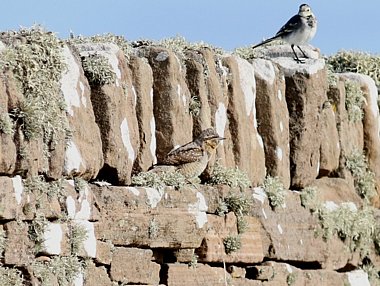NEW! Wales in Autumn
Autumn birding along the entire stretch of the wild West Coast of Wales!
| Destination | |
|---|---|
| Focus | |
| 2025 Dates | |
| Duration | 8 Days |
| 2025 Price | £2095 pp £275 single supplement. Deposit £300 |
| Max Group Size | 12 |
Wales is a great place for birdwatchers, yet with so many headlands, picturesque valleys, tidal estuaries, and wetland sites, it can often feel under-watched. Autumn is an exciting time to visit, and on this new two centre tour we explore the entire west coast traveling from north to south either side of Cardigan Bay. A flexible itinerary offers the best chances of seeing the greatest variety of birds, be it searching the bushes for passerines, watching waders and wildfowl on the estuaries or scanning offshore for passing seabirds. West Wales is full of birding potential!
Starting in the north, on Anglesey flocks of Chough are likely around the cliffs, Black Guillemot in the harbours and there are some great wetland reserves on this accessible, large island. We spend time looking for migrant passerines around the Llŷn in the north and the Marloes peninsula in Pembrokeshire, while Strumble Head is one of several classic sea-watching locations on the west coast. In the right conditions all four skuas, Leach’s and Storm Petrel can be seen, while rarer congeners may pass with the masses of post breeding Manx Shearwater. Conwy’s Great Orme has a growing reputation for good birding with scarce birds including Dotterel, Wryneck and Lapland Bunting recorded in recent autumns. The nearby RSPB reserve and a selection of sites close to Bangor offer great potential for waders, gulls and terns and it is well worth checking for scarcer species or vagrants of Nearctic origin.
Islands are another major part of the western coastline, especially when it comes to birds and we plan to visit at least one during this tour. Bardsey offers the best connections and will be our first choice, with a good range of habitats and we can work closely with the Observatory team as we spend the day exploring. It may also be possible to day trip Skomer, Skokholm or Ramsey should there be any birds of interest there, as was very much the case in autumn 2023 after an unprecedented arrival of Nearctic passerines across the Welsh islands!
Day 1: Sat 27 Sep - Arrival in North Wales and afternoon birding
We meet rail travellers at Bangor Station at 1pm before driving to our comfortable hotel, where those arriving by car join the tour. Once organised and settled, we head out for a few hours birding along the North Wales coastline at sites local to Bangor, or venturing slightly further to Conwy RSPB. Opening in 1996 after the construction of the nearby A55 tunnel, Conwy is a great place to begin with a nice mix of tidal estuary, scrapes, freshwater lagoons and scrub. Building flocks of Oystercatcher, Curlew, Redshank and Dunlin often harbour scarcer species such as Greenshank, Spotted Redshank, Curlew Sandpiper or Little Stint on autumn. Great and Little Egret may both be seen on the wetlands, Kingfisher favour quiet water filled channels and we may encounter passage warblers like Common and Lesser Whitethroat in the bushes as we walk between the hides. Flexibility is key on a migration tour such as this, and if on the day conditions are favourable for a passerine arrival we may explore the limestone headland of the Great Orme instead. We stay overnight in Bangor for four nights.
Day 2: Sun 28 Sep – Anglesey
The large island of Anglesey (Ynys Môn) and its smaller neighbour Holyhead (Caergybi) boast a mixture of habitats from rugged rocky coastlines, tidal floodplains and freshwater pools. Its position at the northern tip of Wales only enhances its migrant-attracting potential, the scrubby cover around Breakwater Country Park and South Stack worth checking for passerines. Walking around the headland, our first Chough, plus Peregrine, Raven and Hooded Crow may also be encountered. If conditions have grounded migrant pipits, chats, warblers, thrushes and finches, other possibilities include Ring Ouzel, Snow Bunting or perhaps something scarcer like Yellow-browed Warbler. Offshore we look for Black Guillemot, and tidal estuaries such as the Braint or Malltraeth and its Cob Pool host passage waders including Black-tailed Godwit and Greenshank. Wildfowl numbers will be starting to grow at sites such as at the flooded former colliery at Cors Ddyga, and perhaps we will get lucky and glimpse a Bittern skulking in the reedbed or Marsh Harrier floating overhead. Water Rail and Cetti’s Warbler will likely be heard calling too, though can be notoriously hard to see!
Day 3: Mon 29 Sep – Bardsey Island
Lying 2 miles off the tip of the Llŷn Peninsular, Bardsey (Ynys Enlli) is home to a Bird Observatory, established and studying migration since 1953. With a nice range of sheltered habitats and the influence of a lighthouse, this island is firmly placed in the Welsh ornithological history books with a reputation for attracting migrants and especially rarities. We drive early down the Llŷn, walking through the valley at Porth Meudwy (itself an excellent migrant haven) to catch our crossing to the island. With plenty of time to comfortably cover the main birding areas, we focus on finding migrants in the vegetated gardens, fertile farmland, withy beds and sandy beaches. Regular scarcities include Wryneck, Red-backed and Woodchat Shrike, Melodious and Barred Warbler and we work closely with the Observatory team, perhaps with the opportunity to witness some bird ringing too. The east side is dominated by the 167m high Mynydd Enlli, the rewards for those who scale it being commanding views over the Irish Sea and Cardigan Bay. Chough may be seen anywhere on Bardsey and at this time of year, Grey Seal pups will also be visible on secluded beaches and coves. With the prevailing winds dictating which species may be on the move, who knows what might turn up!
Day 4: Tue 30 Sep – Llŷn Peninsula
Without the time pressure of a ferry to catch, we return to the gentle arc of the Llŷn to explore its birding delights. With numerous exposed headlands such as Mynydd Mawr and vegetated coves around Aberdaron at our beck and call, the peninsula is a real hidden gem offering vast potential to find our own birds! Out on the cliffs, Raven and Chough will be ever present and there is always a chance of migrating Dotterel, Golden Plover or Lapland Bunting in amongst the Wheatear, Meadow and Rock Pipit. In the sheltered valleys, migrant passerines may include a range of warblers, Redstart, Whinchat, Pied and Spotted Flycatcher with chances of a rarity. Meanwhile, near the head of the peninsula at the mouth of the Menai Straits is Foryd Bay, an excellent place to see wading birds at a high-tide roost. The site is renowned for its wintering Greenshank, Spotted Redshank, Jack Snipe and (Pale-bellied) Brent Geese – perhaps the first of these arriving at this time. Gull flocks often contain increasing numbers of Mediterranean or Yellow-legged Gull, with Sandwich and Common Tern also likely among them.
Day 5: Wed 1 Oct – Transfer to South Wales
Today marks our shift to the south, traveling down the curve of Cardigan Bay, breaking up the journey with birding stops along the way. At roughly halfway, the Dyfi Estuary at Ynyslas should give us a range of passage waders such as Dunlin, Ringed Plover, Curlew, Black and Bar-tailed Godwit and perhaps Whimbrel or Curlew Sandpiper too. Migrant wildfowl on the pools can include Pintail and Garganey, and a locally bred Osprey might still be hanging around. Deviating away from the coast to explore new habitats inland is another option, and perhaps we can try Cors Caron NNR, a part of Tragaron Bog which still supports a (very small) residual population of Willow Tit. Scanning the moorland and forest edges, raptors including Red Kite, Goshawk, Hen Harrier and Merlin may also be seen, before we return coastwards and to our accommodation in Pembroke where we stay for three nights.
Day 6: Thur 2 Oct – North Pembroke
Strumble Head is renowned for its sea-watching status in autumn and following strong north-westerly blows, the brave can certainly reap the rewards! Good views of auks, Gannet, Kittiwake, Fulmar, Manx and Sooty Shearwater, Storm Petrel are possible, as are Leach’s Petrel, Sabine’s Gull, Grey Phalarope and multiple skua species. And with numerous other headlands spanning St. David’s, Dinas & Cemaes, we are truly spoilt for choice, keeping an eye on the bird news and reacting accordingly should anything turn up. Tefi Marshes near Cardigan is another site we will likely visit during our tour, the hides there offering good viewing opportunities. Autumn waders dropping in can include Ruff, Wood and Green Sandpiper, the feeders attract Nuthatch and waiting patiently a Water Rail or Cetti’s Warbler might actually reveal themselves!? Red and Sika Deer both reside here, and we do our fair share of exploring other lesser-travelled sites in North Pembroke in search of our own birds.
Day 7: Fri 3 Oct – South Pembroke
Paying close attention to what has been recorded locally, we head out and birdwatch in a variety of exciting venues around the headlands to the south of St Brides Bay. Locations such as Marloes Mere, Dale Gann and St Ann’s Head may warrant our attention, before moving around the coast to the other side of Milford Haven and exploring sites across the MOD Castlemartin Range. Likely species include Chough, Raven, Stonechat, Wheatear while dispersing Dartford Warbler can sometimes find thy’re way here. On the southern coast, St Govan’s really proved its worth in autumn 2023 during an epic influx of north American rarities to Pembrokeshire, with a Magnolia Warbler AND a Canada Warbler barely a mile apart for several days! Visiting an outlying island such as Ramsey may also be possible, be it to explore and search for migrants ourselves, or if an exciting vagrant may be on offer!
Day 8: Sat 4 Oct – Departure
Our exact plan will be dictated by travel arrangements, with the choice to depart the tour from Milford Haven train station. As part of our plans, we will need to drive back north to Bangor for clients to collect cars, and it is there where our tour officially concludes at around 1pm.
Please note: all itineraries are given as a guide only. Actual holiday content may vary according to the judgement of your guide, and elements beyond our control (eg weather).
What's included in your holiday price
- Seven nights comfortable en-suite hotel accommodation at two well placed centres for birding activities. We choose from our personally inspected shortlist, where birders are welcome and the hospitality is special. Guests are never expected to share. Full details with your joining pack.
- Full English breakfast and dinner from Saturday evening till Saturday morning, packed lunch each day from Sunday to Friday.
- All boat trips to islands.
- All reserve entrance fees.
- All transport by comfortable minibus.
- Guidance from a professional Group Leader.
What's not included in your holiday price
- Travel to Bangor rail station or other agreed meeting point.
- Insurance, drinks and other items of a personal nature
Field Notes
Weather: Expect a wide variation in weather conditions, which can be wild and unpredictable, with temperatures in Wales perhaps averaging around 16 degrees Celsius. Sunshine, rain and strong winds are all possible, and you will probably experience a bit of everything.
Biting insects are not expected.
Clothing: Please bring waterproof walking boots or shoes, weatherproof clothing and a small rucksack. Exposed coastal locations can be cold at any time of year if the wind picks up, please pack accordingly.
Walking: The holiday will be run at a relaxed pace, with time for photography, general wildlife as well as fabulous birdwatching in a spectacular setting! There will be short to moderate (1 to 3 mile) walks most days mainly on well walked tracks and paths. A reasonable level of fitness would be an advantage on this tour to be able to get off the beaten track at times.
Other birding and wildlife holidays in Wales
Why choose Heatherlea for your birding and wildlife holiday?
Heatherlea is one of Britain's leading wildlife holiday operators. In 2019 we celebrate our 29th Anniversary with more choice than ever, both in Scotland and overseas. Relax and enjoy yourself, as we do all the planning! Above all, we make it our business to show key wildlife to you. Our fully inclusive guided holidays concentrate on the real experience, and we take time to ensure that each of our guests enjoys everything we do.
- We have been organising birding and wildlife holidays for 30 seasons, and have a highly experienced and capable office team. We also offer a telephone and email service outside normal office hours.
- We are a small company, run BY birders FOR birders. Come and see!
- Heatherlea are Mainland Scotland’s FIRST ‘5-Star Wildlife Experience!’ This is the highest available grading, classified as ‘exceptional’ by visitScotland.
- Heatherlea hold full Tour Operator Insurance for your added protection.
- Heatherlea is a limited company, registered in Scotland. We are also registered to pay VAT, which is included in your holiday price as quoted on this page.
- Once your holiday is confirmed in writing by us, we promise not to surcharge the price for any reason.
Trip Reports
Coming Soon

